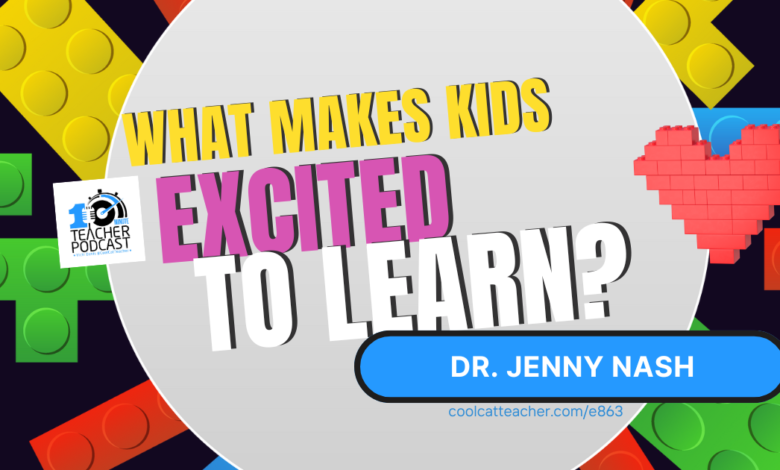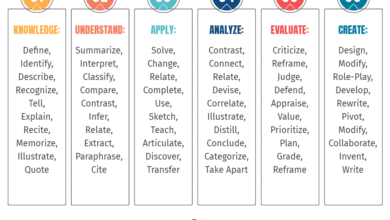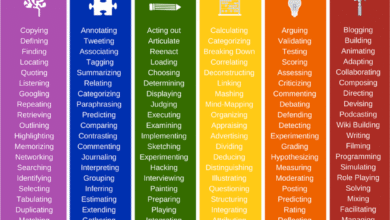What makes kids excited to learn?

From the Cool Cat Teacher Blog by Vicki Davis
Follow @coolcatteacher on Twitter
We want our students to be engaged and to want to learn. Particularly since the pandemic, many schools have struggled to engage learners. Today’s episode shows us not only how we can creatively include play in our classrooms, no matter the age group or subject, but also why it’s never too late to re-engage students.
Additionally, Dr. Nash shares fascinating data from a recent survey involving over 6,000 administrators, teachers, parents, and students that reveals the importance of student engagement and how play-based learning can drive meaningful educational experiences across all ages.
We also learn how play-based learning can drive meaningful educational experiences across all ages.
Key Questions We Answer in the Show:
- How does play-based learning impact student engagement and educational outcomes?
- What does the latest research from LEGO Education tell us about current engagement levels in schools?
- How can teachers incorporate hands-on, playful learning even in older grade levels?
- What are some practical examples of how purposeful play can solve real-world classroom challenges?
- Why is fun important in education, and how can teachers strike a balance between fun and learning objectives?
Key Research Insights (go to LegoEducation.com to read the full report.)
- 35% of administrators report that students are disengaged in school, leading to issues like absenteeism and poor information retention.
- 83% of attendance rates are tied directly to hands-on, engaging learning experiences.
- 84% of surveyed educators believe that hands-on learning can improve test scores.
- Only 2 in 5 students report regularly experiencing play-based learning, despite strong support from both teachers and students for its benefits.


Subscribe to the Show
 |
This week’s sponsor
Lego Education
Click Here for Engagement Research
⭐⭐⭐⭐⭐ Sponsors make this show possible but do not preapprove or necessarily endorse the content. Please support our sponsors by clicking on the link and checking out their services. We only recommend the best in education on the 10 Minute Teacher! Learn what it means for this to be a sponsored episode.
YouTube Video – Premieres on September 16, 2024 at 11 am
This week’s guest

Dr. Jenny Nash from LEGO Education
Dr. Jenny Nash serves as the Head of Education Impact Team for LEGO® Education in the US, where she provides direction and leadership in delivering meaningful education opportunities for students. With previous experiences as a professional development provider and STEM teacher, Jenny is an advocate for hands-on, inquiry-based learning for students and building confidence in teachers to provide this type of learning. Previously, Jenny was the Director of Clinical Experiences and Director of Professional Development Schools at Marshall University, where she conducted STEM outreach and programming for K-12 schools in addition to working with student teacher candidates. She was also a general science teacher in middle and high school in West Virginia, where she focused on provided blended learning and project-based learning experiences for her students. She has a Bachelor’s of Business Administration from Marshall University, a Master of Arts in Teaching from Marshall University, and a Doctorate in Education from the University of Florida, specifically in the area of curriculum and teaching.
🎙️ Show Notes
Episode Description:
In this episode, we sit down with Dr. Jenny Nash, Head of Education Impact, USA for LEGO Education, to discuss the power of hands-on, play-based learning. Dr. Nash shares groundbreaking research revealing how student engagement improves through purposeful play and project-based learning. We explore the challenges educators face with student disengagement and how play can be a solution in classrooms of all ages—from young learners to high school students.
Whether you’re a teacher looking to integrate more fun into your lessons or an administrator curious about innovative approaches to improving student outcomes, this episode is packed with valuable insights and practical tips for enhancing learning through play.
Key Topics Discussed:
- How hands-on, playful learning increases student engagement and improves outcomes
- The latest research from LEGO Education on disengagement in schools
- Practical strategies for integrating purposeful play into any classroom
- Real-world examples of how playful learning is solving tough educational challenges
- Why it’s never too late to re-engage students, no matter their age or grade level
- How fun and meaningful learning can go hand in hand
📝 Transcript
This transcript is available on Apple Podcasts or on YouTube via the AI transcription capabilities there.
Related Episodes
The Spectacular Story of Quest Academy: Whole School…
How to Use AI to Promote Equity Now
How to Prevent AI Cheating: Integrity in the…
Some Big AI Problems: The Eliza Effect and…
Sculpting The Future: How Women’s Unique Insights Transform…
Disclosure of Material Connection: This is a “sponsored podcast episode.” The company who sponsored it compensated me via a cash payment, gift, or something else of value to include a reference to their product. Regardless, I only recommend products or services I believe will be good for my readers and are from companies I can recommend. I am disclosing this in accordance with the Federal Trade Commission’s 16 CFR, Part 255: “Guides Concerning the Use of Endorsements and Testimonials in Advertising.”
The post What makes kids excited to learn? appeared first on Cool Cat Teacher Blog by Vicki Davis @coolcatteacher helping educators be excellent every day. Meow!



